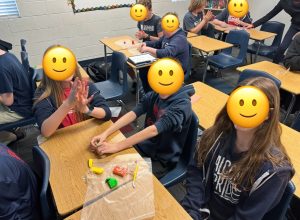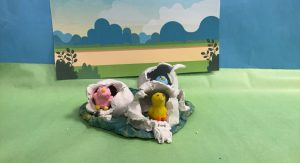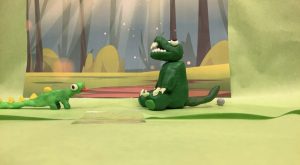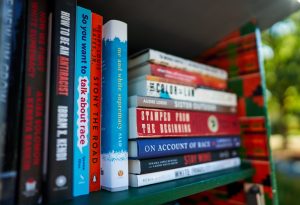My thoughts on Hyperlinked Communities are divided into two parts. First, I want to discuss a couple of the fantastic community-building activities that caught my attention from the Hyperlinked Communities lecture (Stephens, 2025), along with possible utilizations in a school setting. Next, I’d like to reflect on the information in the article “The Healing Power of Books” and how I feel it relates to curating a diverse and inclusive collection in the school library.
Part 1: Hyperlinked School Library Community-Building Activities
Stop-Motion
I think hosting stop-motion projects in the library is a fantastic idea! The students in my film studies class did a stop-motion project with clay and had such a blast putting those together and then viewing all of the finished products. In a library setting, this would be a great way to bring students together and give them a chance to express their individuality and creativity, as well as to build teamwork. I know that students especially love being able to view and share their finished products, so I’m sure there would be fun ways to showcase their work in the library (perhaps a TV screen or other digital display that cycled through their videos for a day or two so that everyone could enjoy their work).
Here are some of my students in the beginning stage of their claymation projects, and some of the figures they made:



Craft Groups
The knitting group idea is another great one! I think a modified version of this would be a big hit with middle schoolers. I’ve seen teachers in the past who have done craft time at recess (i.e. “crochet club”) and I’ve also seen librarians do read-aloud time at recess for students which they can choose to attend in lieu of going outside. I’m thinking…perhaps there’s a way to combine the two? I can envision students being thrilled to have a variety of crafting supplies or even just a variety of coloring tools they could use while they listen to the story. With their busy schedules and limited time to visit the library recreationally, I think this could give them a great chance to unwind and enjoy some relaxation and story time with their peers.
Part 2: Curating an Inclusive Collection
Having worked in education for many years, I’ve heard so much about social and emotional learning and how important it is to a child’s overall well-being. In her article, Klinker (2020) talks about the power that books can have in enabling a reader to to walk in the footsteps of characters that they may feel a personal connection with due to similar lives or experiences (“mirrors”) and to explore different or unfamiliar viewpoints (which she calls “lenses”). These lenses can also be referred to as “windows” or “sliding doors” in the sense that readers can proverbially enter a different world or setting in their imaginations as they are reading, allowing them to connect with people who may be different from themselves (Mirrors, windows, and sliding glass doors, n.d.). My school community does not have a lot of diversity, and I think it’s so important to give children not only the chance to see themselves represented, but to explore other communities and cultures, as well as diverse thoughts and viewpoints through the types of books and materials provided. In one of my MLIS classes, I completed a sample “diversity audit”, tracking the types of representation present within a collection of books, and I feel that this is such an important thing to do regularly in the school library to ensure that the collection is inclusive and sensitive to the social and emotional learning needs of each member of the community.

(Mirrors, windows, and sliding glass doors, n.d.)
References
Klinker, J. (2020, July 24). The healing power of books: Using reading to address social and emotional needs. Gale. https://blog.gale.com/the-healing-power-of-books/
Mirrors, windows, and sliding glass doors. (n.d.). Rise up against racism. https://ruar.org/blog/mirrors-windows-and-sliding-glass-doors-rudine-sims-bishop
Stephens, M.T. (2025). Hyperlinked communities. [Lecture recording]. Panopto. https://sjsu-ischool.hosted.panopto.com/Panopto/Pages/Viewer.aspx?id=3eacdb23-84fd-49e5-9975-aef3014b3ed2
@khirst927 I love how you zoomed in on the ideas related to creating things at the library — stop motion for digital skills and knitting for physical skills! I also appreciate your sharing about the diversity audit.